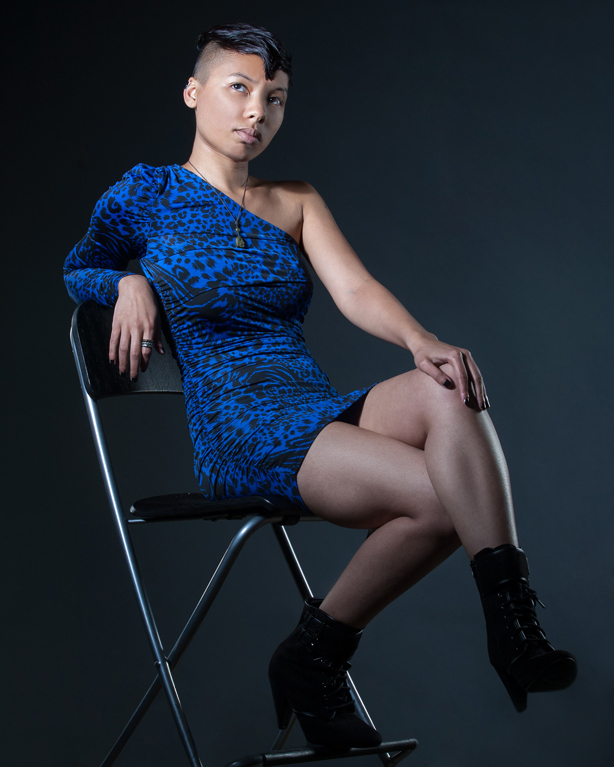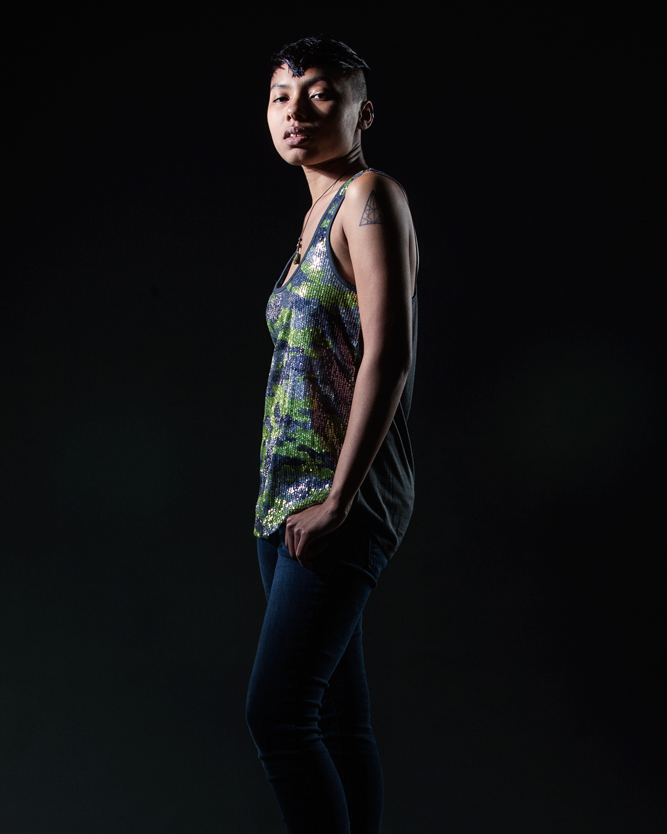
Photo by LuAnne DeMeo.
What does it mean to look feminine? Traditionally in Western societies visible signs of femininity have been long hair, the use of makeup to beautify the face, wearing dresses and skirts, among many other visible signifiers. Anyone who does not fit into this vision of what a woman ought to look like is deemed masculine and must be rejecting their femininity. After all, why would a woman not want to look like a woman? She must want to be a man, in that case. She must want to attract lesbians to her because only lesbians would be attracted to such a masculine appearance in another woman. Men aren’t going to want her if she isn’t feminine enough. She isn’t going to get the jobs she might usually be able to get if she looked more like a woman should. She’s not a real woman.
These may sound like ridiculous assumptions, but I assure you these sentiments are pervasive and entrenched in American society, even today as we begin to more readily accept the gender spectrum. I know this is true because some of these statements were lobbed at me by other people who don’t know me very well. I have been mistaken for a man and called “sir” or “the guy in charge.” Even some of my family members actively try to get me to look more “feminine” as they say. Since I started to exercise my right to decide my appearance, I have been made to feel as though I was rebellious and unacceptable as a woman.

Photo by LuAnne DeMeo.
But what are femininity and masculinity in the first place? In the “Encyclopedia of Sociology,” Peter J. Burke and Jan E. Stets from the Department of Sociology at Washington State University wrote in their paper “Femininity/Masculinity” that: “Femininity and masculinity are rooted in the social (one’s gender) rather than the biological (one’s sex).”
Essentially, this means that the ideas of femininity and masculinity are social constructs within our own gender identity, which is also a social construct. Neither have any biological basis to reference, only the views of human beings and their personal social development. There is no exact definition. There is only a spectrum along which we can live if we so choose to as individuals. People define the feminine and masculine qualities in themselves just like they define their own gender.
Trying to force women and men into restrictive boxes of femininity and masculinity is wrong. No one has the right to tell you who or what you are. Every person is the singular captain of their identity and can change course at will. My shaved head and disdain for makeup doesn’t make me any less of a woman. Just because I wear jeans and a T-shirt most of the time doesn’t mean I want to biologically become a male. My idea of what looks good on me is simply what makes me, personally as a woman, feel good about myself. Short hair, a clean-cut blazer, jeans and Adidas is my type of femininity. As singer India Arie said, “I am not my hair. I am not this skin. I am the soul that lives within.”

Photo by LuAnne DeMeo.
Instead of judging others and trying to impose your definitions on them, consider what’s inside of you that makes it so unacceptable. Maybe instead of getting mad at me for being free with my brand of femininity, you should exercise some freedom of your own.























